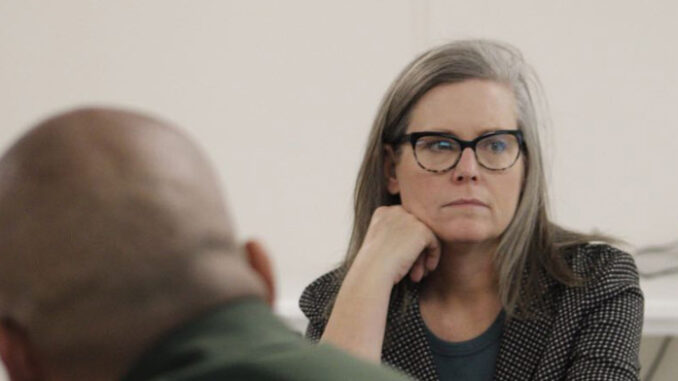
Three of Arizona’s top elected officials, Superintendent of Public Instruction Tom Horne, Senate President Warren Petersen, and Speaker of the House Ben Toma are blasting Governor Katie Hobbs for her incendiary and specious claims regarding the costs of the Empowerment Scholarship Account program.
The three conservative leaders are responding to claims Hobbs made in a tweet in which she said the ESA program was harming the state’s budget.
“The school voucher program threatens to decimate our state’s budget,” tweeted Hobbs. “I call on Superintendent Horne, Speaker Toma, and President Petersen to join with bipartisan leaders to bring accountability to the school voucher program and end the wasteful, runaway spending.”
The school voucher program threatens to decimate our state’s budget.
I call on Superintendent Horne, Speaker Toma, and President Petersen to join with bipartisan leaders to bring accountability to the school voucher program and end the wasteful, runaway spending. pic.twitter.com/6pvsovlWBO
— Governor Katie Hobbs (@GovernorHobbs) October 11, 2023
However, Republicans say the “bipartisan state budget signed by Governor Hobbs fully funded ESA growth for FY24 and is reportedly on target through the first quarter of the budget year.”
Each year, the state estimates the total K-12 student counts and budgets the money needed for all the school funding formulas. The Department of Education reported on October 4 that the budget is currently on pace to have a year-end surplus of roughly $77 million. This surplus reflects generally cautious budget estimates. As it relates to the Empowerment Scholarship Account (ESA) Program, the budget estimate of 68,000 total users is within one percent of the current program enrollment.
“Governor Hobbs continues to blast the ESA program as unsustainable and exceeding estimates,” said Toma. “Neither are true. We remind the Governor that she leads the entire state of Arizona, and if she seeks changes to the ESA program, she ought to propose serious policies, not tweet vague threats. The State Legislature has yet to see any policy proposals from her office. Arizona will continue to responsibly fund students, not systems.”
“The Governor’s calculation is in error. She is counting the $7,200 paid for each ESA student without offsetting the $13,000 paid per student that would otherwise be spent for that student to attend a public school,” said Horne. “The overall numbers bear this out as the expenditures for all public school spending, including the ESA program are $72 million below budget.”
“Arizona families want choices for their children’s education. ESAs are one of many choices the Legislature is prioritizing. The fact is, we budgeted for the 68,000 kids currently enrolled and have responsibly planned for incremental spending increases for this program in the years to come, as we do with a variety of other programs in our overall budget. We’re always open to improving our state’s programs, but for the sake of Arizona families who want to choose the best educational settings to meet their children’s needs, ESAs are here to stay,” said Petersen.
“Unfortunately, the immediate crisis negatively impacting our budget is the skyrocketing inflation caused by reckless policies being pushed by Democrats at the federal level. This is crushing Arizonans’ ability to have discretionary income. As a result, many of our citizens are struggling to pay for basic necessities, they’re spending much less, and now our state is limited in the tax revenues we’re able to generate,” concluded Petersen. “We will evaluate ways to cut spending to accommodate any budget shortfall, but our school choice program will not be on the chopping block.”
According to sources inside the Democrat Caucus, the issue of ESAs is arising now as part of a campaign in preparation for the upcoming Legislative Session. Democrats hope to trade funding for the ESA program in exchange for a package of bills addressing food and rental taxes.
The Common Sense Institute has found “that enrollment in the state’s public schools had declined between 30,000 and 70,000 students relative to pre-pandemic projections. These enrollment declines generate substantial state funding savings and are consistent with a nationwide shift in preferences by parents and children for education. Between 2019 and 2022, despite unprecedented investment in Arizona’s public K-12 schools, parents have shown increased interest in alternatives to their assigned district school. Arizona’s existing school choice model gave parents flexibility to find an option that helped their child continue to learn during the pandemic-era classroom disruptions.”
The Institute believes that the “rapid growth in ESA participation during the first year following universal eligibility can be explained in part by the large base of new private- and home-schooled students who left their district schools during 2020 and have not returned.”
Common Sense Institute’s Key Findings:
